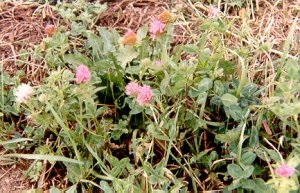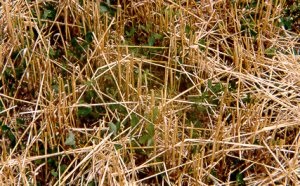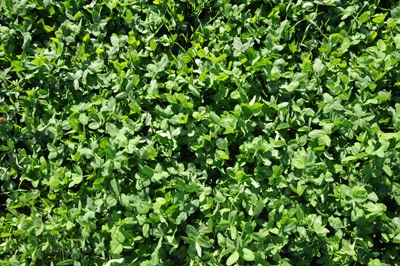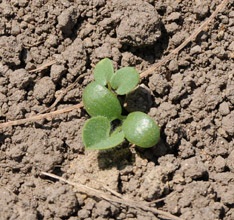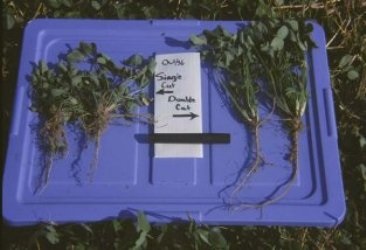Cover crops: red clover
Information on the benefits and growth habits of red clover planted as a cover crop.
Description
Family
- Leguminosae
- Species Trifolium pratense L.
Cover crop use
- Frost seeded/underseeded in a cereal crop
- Inerseeded in a standing crop
Growth habits
Two general types of red clover grown in Ontario:
- Dougle cut or "medium" red clover
- flowers in seeding year
- vigorous regrowth after cutting
- Single-cut or "mammoth" red clover
- slower growing, matures about 2 weeks later than double-cut
- requires vernalization to flower, does not flower in seeding year
- more drought tolerant
Germination
- Innoculate with Rhizobium trifolii
- Plant shallow
Top growth
- 20 to 60 cm height growth
- Best growth in moist, cool conditions
- Usually flowers within 65 days of planting — will continue to flower every 30 to 35 days after harvest once established
Root system
- Thick tap root that grows 60 to 90 cm per year
- Lateral roots are found mostly in top 12 cm of soil
Overwintering
- Short-lived perennial
- Will overwinter
Site suitability
- Will grow on a wide variety of soil conditions — including slightly acidic pH
- Shade tolerant
- Short lived perennial, persists 1 to 2 years in southern Ontario, 2 to 3 years in northern Ontario
- Best growth with soil pH 6.0 to 7.0
Control options
- Systemic herbicides
- Tillage
Sensitivity to herbicides
- Red clover is sensitive to the soil residues of atrazine and some Group 2 herbicides.
Weed control
- Red Clover is frequently underseeded into a cereal crop and any weed control herbicide program must be:
- safe to the cereal crop
- effective on the weeds
- safe to the cover crop
- Usually the major weed control problems will be with winter annuals in fall seeded crops and with annual broadleaf weeds in spring cereals. Sometimes the herbicide needed to control the weed is not safe on the cover crop.
The safest formulation of MCPA is the sodium salt form but MCPA is only safe at low rates. Higher rates may give better weed control but frequently it will stunt the clover or kill it. 2,4-D will injure red clover. - See Publication 75, Guide to Weed Control for herbicide recommendations for use on "Winter Wheat and Fall Rye Underseeded to Clovers" (Achieve, Buctril M, MCPA, MCPA/MCPB) or on "Spring Wheat, Oats, Barley Underseeded to Forage Crops" ( Avenge, Achieve, MCPA Sodium, or MCPA/MCPB).
Benefits and cautions
Nutrient management
- Efficient nitrogen-fixer — 45 kg/ha for plowdown clover (40 cm in height)
Pest management
- Host to several insects, nematodes and diseases
- Host to root-lesion and root-knot nematodes
- Will stimulate soybean cyst nematode cyst hatching — and if a proper host is not present — will reduce population
Organic matter
- Adds considerable biomass
- Improves conditions for soil microbial life
Erosion control
- Once established, extensive soil protection provided
- Improves soil infiltration and structural strength
Soil moisture
- Improves water holding capacity, infiltration and permeability rates
Getting started
Establishment
- Seed 11 kg/ha, lower if seeded with a forage grass like timothy
- Usually frost seeded, but can be drilled or broadcast shallowly
- Slow growing at the beginning, more easily established than alfalfa
- Use a clover type inoculant if clover has not been grown recently
Cost and availability
- Seed readily available — 2 kinds available, single (late blooming)and double cut (early blooming, usually more expensive seed)
Updated: December 13, 2024
Published: August 24, 2022
